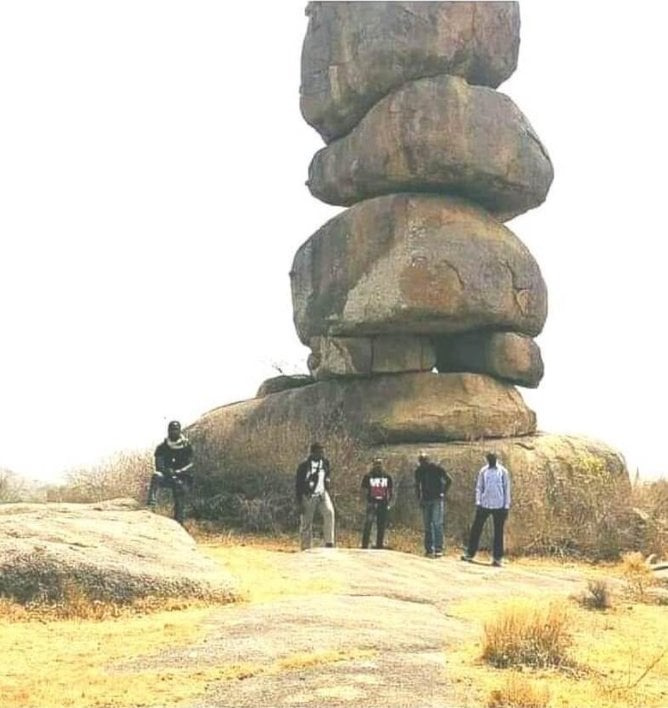but we won’t talk about it today. We will review an African Megalyth Site. These were not produced JUST in northern Europe.
THE TALES OF KIT MIKAYI

Kit Mikayi means “first wife” in Dholuo, and Dhuluo is a widely spoken language in the Lake Victoria region in Western Kenya. This name is not in reference to an actual person, but rather a rock formation located along the Kisumu-Bondo highway. This rock formation consists of three stone columns standing side by side, each comprising of massive boulders perfectly balanced on top of each other. The largest of these stone columns towers at over 20 meters in height. According to Luo oral tradition, Kit Mikayi is tied to a story, a memory.
In the past, an elderly man named Ngeso had a great love for the natural stone monument. Every morning, Ngeso would go and lie in the cave under the rock all day. He was so fascinated and consumed by this stone that his wife would often bring his breakfast, lunch, and dinner to him as he lay in the cave around the stone, or on the stone itself. He ate most of his meals there. The story goes that, one day, someone asked Ngeso’s wife where he was. The wife replied that he was at the stone, which she referred to as his first wife because he spent so much of his time at the monument and loved it very much. His actual first wife felt like a second or third wife to the stone, since he gave more attention and time to the stone structure, as if it were his first wife (Mikayi). Thus “kit mikayi “.
That’s the first tale.
The other states that the rock formation reflects the Luo culture of polygamy. Traditions have developed around these stones, referring to the stones by the names of huts of the first three wives in a traditional Luo homestead. Thus, the first wife’s (Mikayi) hut is said to be the one lying in between the three rocks. The second wife’s (Nyachira) hut is on the right-hand side of the rocky formation, and the third wife’s (Reru) hut is on the left-hand side. The position of these rocks within the rocky formation is therefore depicted in terms of the typical Luo family structure and homestead organization.
People access the shrine for many different reasons, including praying, taking oaths, undertaking rituals and associated practices, and enjoying its natural beauty. During times of catastrophe like hunger and famine, Luo elders would conduct rituals at the shrine and rain and bounty harvests would follow. Elderly men and women of excellent social standing would guide the rituals. While men would partake in activities such as slaughtering the animals, women did the singing, dancing and cooking of the foods accompanying the rituals. For generations, the community has relied on the shrine as a sacred site, where they could visit and commune with the Nyasaye (God).